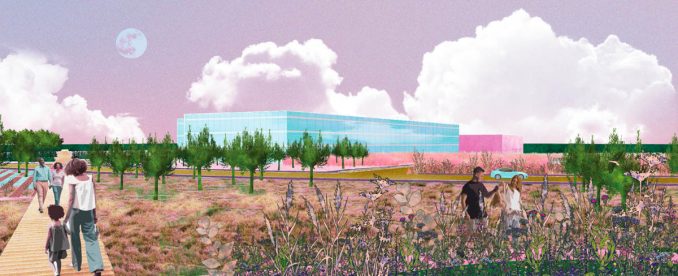
The university was founded under the Morrill Act of 1863, which funded the establishment of the university to train those in the field of agriculture. Today, many of the remnants of this land grant model are still present. The extension program, which connects practicing farmers to those doing agriculture research at the university, is the strongest vestige of the land grant, and Waterman Agricultural and Natural Resources Laboratory serves as its home base. Located on the north of campus, Waterman’s presence in the city makes it the working bridge between agricultural theory and practice.
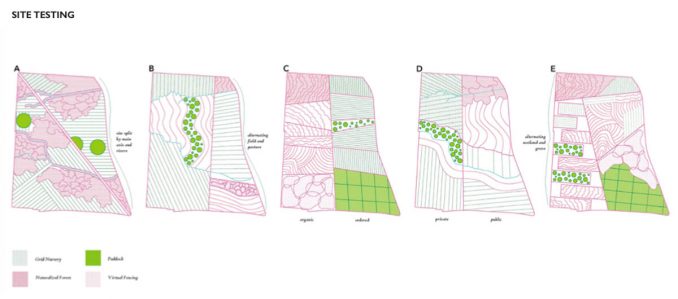
Waterman has three main objectives: outreach, research, and education. These make for an exciting and dynamic site, but it can also create tensions in certain spaces. While visitors love getting close to cows, the dairy requires a certain amount of biosecurity, as do delicate research experiments. The navigational tensions can lead to spatial fragmentation, which inspired us to create a “glitching” pattern for the site that made use of these fragments while working to create connection between the various spaces. We primarily encounter glitches in digital media. As a film or video glitches, faces, buildings, and landscapes are deformed and superimposed, shifting in orientation, color and scale. This sudden shift interrupts the viewer’s experience and calls attention to the present moment. We employ this technique on the site, applying it along the primary spatial axis, altering the scale and form of waterways, terrain, plant communities, and sculptures.
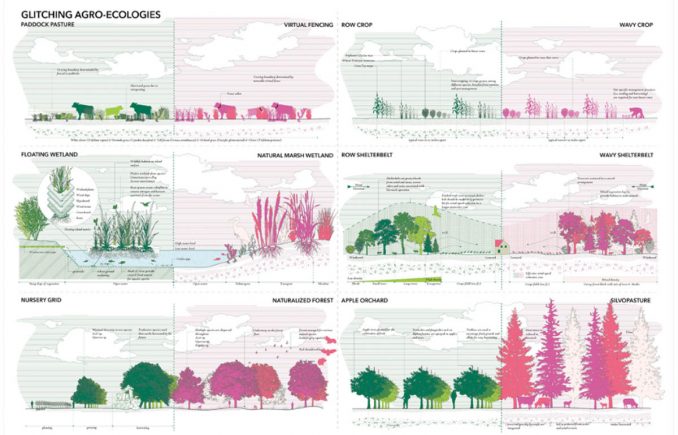
To organize the site, we designed six agro-ecosystems, with two versions of each: one structured and one more naturalized. For example, a fenced in paddock contrasts with an amorphous virtual fence pasture and orthogonal crops rows contrast with those planted along contours. When an agro-ecosystem reaches an axis or change in topography, it will glitch and transform into its counterpart. Sometimes two of the same ecosystems are placed next to each other like in the cases of crops and forest to highlight their differences. Other times, two very different ecosystems are placed next to each other, and they begin to bleed into one another, creating a third, entirely new environment like the intercropping between the apple orchards and crops. These adjacencies offer a visitor experience that makes one feel like their surroundings are glitching around them and the borders between zones create unique ecotones as the different conditions interact with one another.
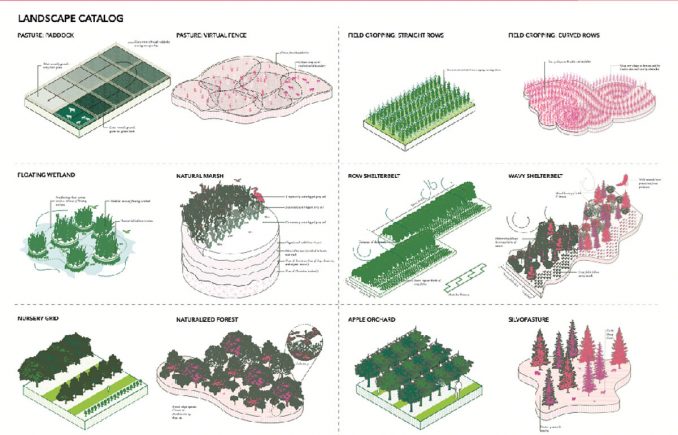
We have created a central public hub that has outreach, education and research functions and allows the public to have easy access to the main public-facing facilities. A circular route allows visitors to walk between and across glitches in the landscape.
This experiential loop is like a switch line to divide the different types of ecosystems. The extension model of this land grant university allows Waterman to bridge the gap between institutional knowledge and practical application. It is our hope that in creating a more welcoming and engaging site, visitors will be inspired by an environment that is greater than the sum of its parts.
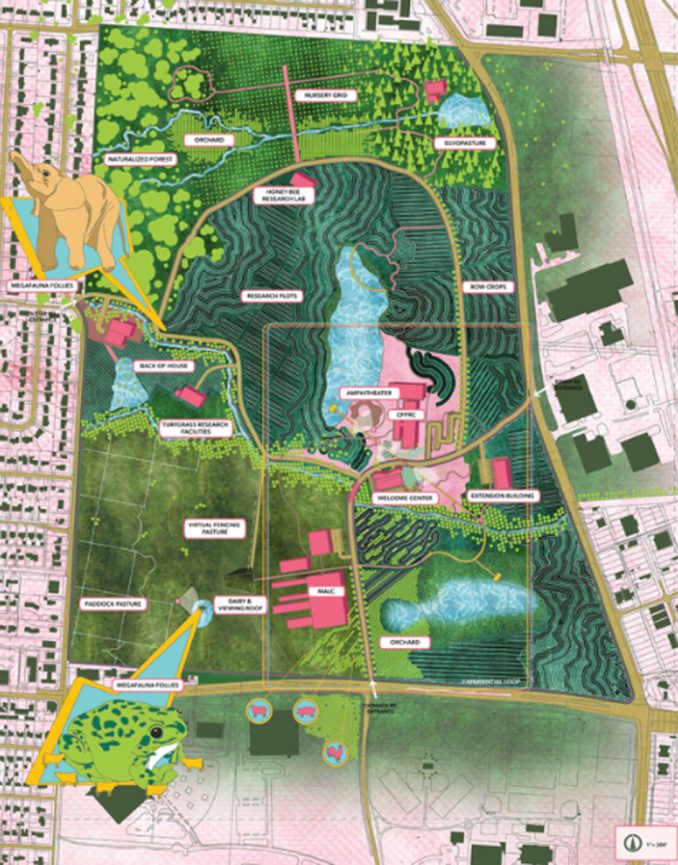
Student Project | Glitch Landscape at Waterman Farm | Olivia Minnie & Annie Purcell & Angel Wong
Student Name: Olivia Minnie, Annie Purcell, and Angel Wong
School: The Ohio State University
Advisor: Forbes Lipschitz
